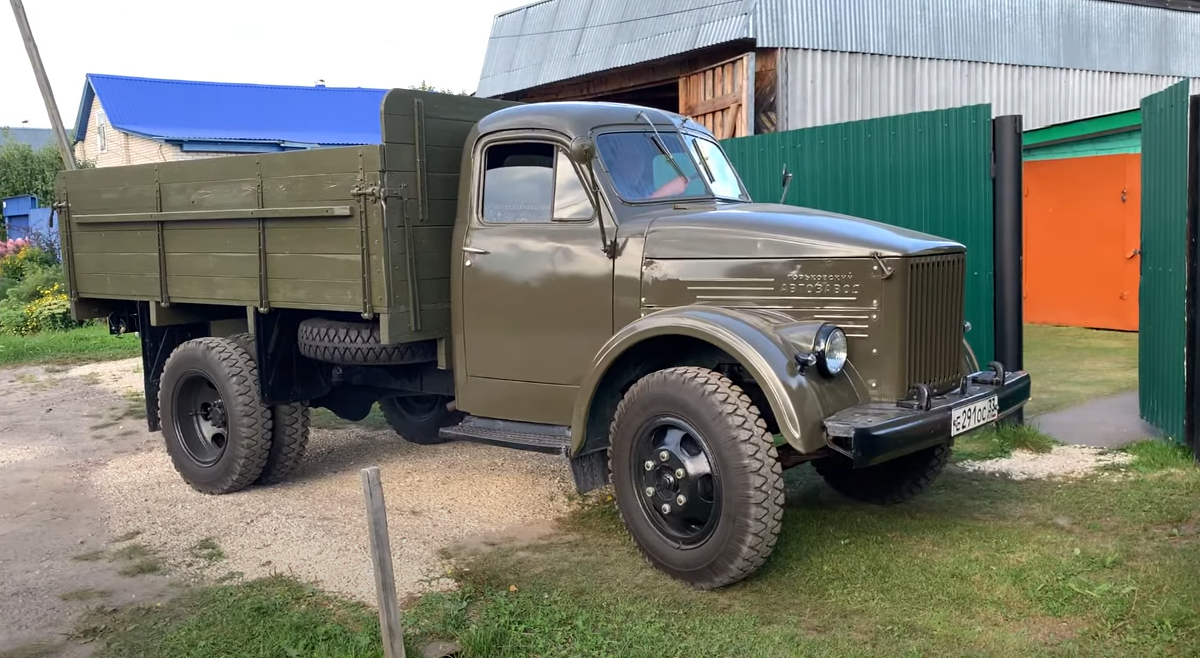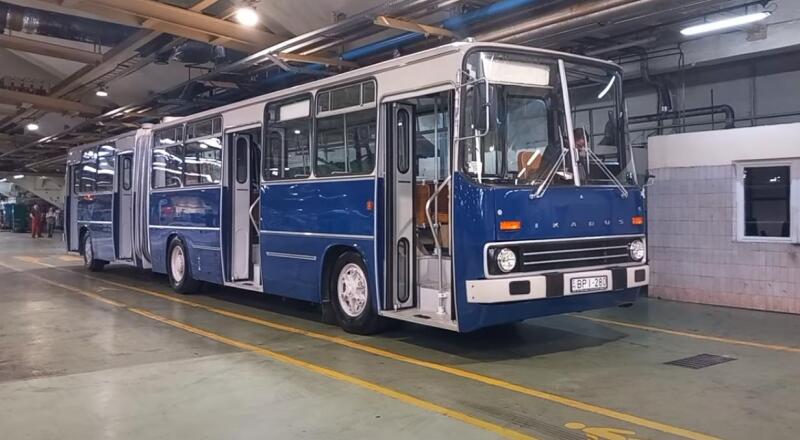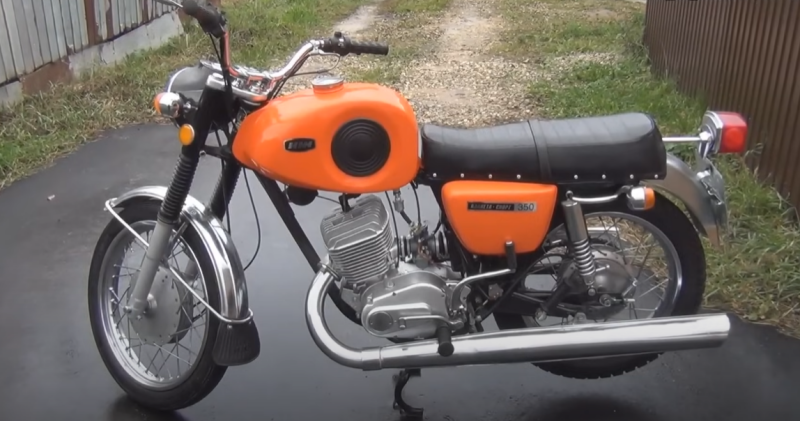Today we will talk about the GAZ-51 - one of the most massive Soviet trucks. It was on these machines that millions of drivers helped to restore the country destroyed by the war, conquered virgin lands, built new factories.
Serial cars appeared in 1946. Although, not everything is so clear. This truck was developed back in the late 1930s, but due to the outbreak of World War II, its debut had to be postponed for a long time.
 Most cars are far from ideal now. Photo: Youtube.com
Most cars are far from ideal now. Photo: Youtube.comThe model was so successful that it was produced for almost 30 years. A reliable and simple truck enjoyed a well-deserved love from drivers for several generations.
Pre-war development stage
Already in the mid-1930s, it became clear to Soviet designers that the GAZ-AA "lorry" needed to be improved. The car was simple and reliable, but it was sorely lacking in carrying capacity.
In 1937, at the Gorky plant (from 1935 to 1957 it was called ZIM) they began to develop a new model. The main task was set clearly - to bring the carrying capacity up to 2 tons. The first prototype of the new truck was made in a couple of years, at the same time testing began.
In 1940, a truck with a GAZ-11 engine was demonstrated at an exhibition in Moscow, after which it was recommended for serial production. The model was outwardly similar to European and American cars, but it cannot be said that it was copied.
 On the right is the pre-war prototype GAZ-51. Photo: Youtube.com
On the right is the pre-war prototype GAZ-51. Photo: Youtube.comThe truck received a new engine that has nothing to do with the GAZ-M. The Soviet designers had already exhausted the possibilities of the last motor, and its power was not enough for a carrying capacity of 2 tons.
The power unit, which received the GAZ-11 index, was copied from the Dodge Series D5. Interestingly, it was bought from the Americans through the NKVD, that is, through figureheads.
Serial production of the GAZ-51 was supposed to begin in 1941, but the outbreak of World War II disrupted all plans. The plant began to produce military equipment, it was simply impossible to launch new civilian models into a series.
Second stage of development
They returned to the development of the GAZ-51 in 1943. By that time, it became clear that the USSR would win the war, so it was necessary to start thinking about restoring the national economy.
 In the 80s, these cars often looked nondescript. Photo: Youtube.com
In the 80s, these cars often looked nondescript. Photo: Youtube.comThe Soviet Union had already managed to get acquainted by that time with American cars supplied under Lend-Lease. It became clear that the GAZ-51 in its pre-war form was already outdated. Yes, and Comrade Stalin directly hinted that it was necessary to increase the carrying capacity to at least 2,5 tons. It's time to refine the model.
She received a number of innovations:
✅ Frame strengthened
✅ The design of the cabin has been changed, and it has become more comfortable
✅ Increased body length and load capacity
As for the engine, this is the same GAZ-11, but already modified and tested during the war years.
There really were borrowings that GAZ designers are accused of - they took orientation on the Dodge WC-51, but only in terms of a number of technical parameters. Outwardly, these two trucks are not similar at all.
Experimental GAZ-51, already converted, appeared in 1944. They were tested and compared with American models, immediately finalized. In 1945, pre-production trucks appeared, shown to members of the government. "Top" approved the GAZ-51 for production. It started in 1946.
Specification Features
Compared to the "lorry", the GAZ-51 has become a more modern car. Driving this car is much easier. There were control devices, automatic adjustment of ignition timing, new brake system and hodovka.
 Rear suspension GAZ-51. Photo: Youtube.com
Rear suspension GAZ-51. Photo: Youtube.comThe GAZ-11 engine was modern and progressive for its age, it cannot even be compared with the GAZ-M. Working volume - 3,5 liters. with a power of 70 liters. With. Fuel consumption was also pleasing - up to 25 liters per 100 km with a full load.
For the first time, a sealed cooling system was used on the GAZ-11 power unit. Because of this, the evaporation of water has decreased significantly, which has simplified the operation of the truck for the driver. There was also a thermostat, so it became more difficult to overheat the engine.
A two-filter engine lubrication system appeared. At the “lorry”, the oil was not cleaned at all, except for the mesh near the pump.
It had a GAZ-51 engine and a number of shortcomings. For example, he did not like working at high speeds with a full load. In such cases, the motor suffered from oil starvation and quickly failed. To avoid this, the designers have provided a rev limiter in the carburetor.
The engine was paired with a four-speed gearbox. By the way, the manual transmission was without synchronizers, so I had to switch up with a double clutch release. Drivers have long forgotten about such a feature of trucks, but before it was in the order of things.
GAZ-51 suspensions even now do not look hopelessly outdated, but for 1946 they were the height of engineering. That only cost a pair of sprung on the rear axle and double-acting hydraulic lever shock absorbers in front.
Cabin and its changes
At the start of the production of GAZ-51, the Gorky Automobile Plant had to save metal, which was not enough. Therefore, the cabs of the first trucks were made of wood. A frame was assembled from the bars, which was sheathed with plywood, and on top - a tarpaulin. This GAZ-51 was until 1950.
 Cabin GAZ-51. Photo: Youtube.com
Cabin GAZ-51. Photo: Youtube.comThen the cabins began to be sheathed with metal sheets. The canvas roof was abandoned. Only since 1954, cars began to be made with all-metal cabs. There was also regular heating.
Now it seems that the GAZ-51 cabin has a Spartan atmosphere. But the drivers who switched to these trucks from the "one and a half" were delighted. It became especially pleasant to work in all-metal cabins, but not because of the material, but because heating appeared.
Modernizations and modifications
Since 1948, the GAZ-51 has been refined and improved. This concerned the appearance, the loading platform, the technical characteristics.
 GAZ-51 medical aid. Photo: Youtube.com
GAZ-51 medical aid. Photo: Youtube.comThe designers tried to reduce the weight of the car - in 1962 it was already only about 2,3 tons, with a carrying capacity of 2,5 tons.
As for the engine, it remained the same throughout the years of production, although it underwent numerous upgrades. Moreover, the GAZ-11 later migrated to a new truck with an index of 52, although under a different name.
More than 51 modifications of cars were produced on the GAZ-30 chassis. Among them was a whole line of export versions, mainly for tropical climates. The trucks that were sent abroad were distinguished by their high build quality, waterproofing of the wiring, and the best parts were chosen for them.
GAZ-51P truck tractors are interesting - they repeatedly flashed in Soviet films of that time. There were also gas-balloon models, and the factory ones, however, did not produce them for long and only in limited quantities.
They assembled on the GAZ-51 chassis and a number of passenger buses. They were used mainly for rural areas. Even walking models without a roof were produced in a limited series - especially for resort towns.
 GAZ-51 milk carrier. Photo: Youtube.com
GAZ-51 milk carrier. Photo: Youtube.comGAZ-51 was assembled not only in the Soviet Union. Technical documentation was received in Poland, China and North Korea. The latter country, according to rumors, is still producing its own copies of Soviet trucks.
It is unlikely that you will be able to meet GAZ-51 on city streets now. But in rural areas, they still occasionally come across. These trucks are also on sale, although the choice is small - about 10 copies. They ask for them from 80 thousand rubles.
If you wish, you can still purchase and restore retro equipment inexpensively. There will be something to show children and grandchildren.










